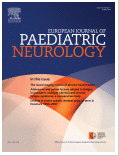 Facioscapulohumeral muscular dystrophy (FSH) is one of the most common myopathies and affects people of all ages. Inherited as an autosomal dominant trait, it results in a selective muscle deficit that preferably affects the face, shoulder blades, trunk and ankles (drop foot). There are two forms, FSH1 and FSH2, depending on the genetic mechanism involved. The degenerative lesions observed in the muscles, often asymmetrically and progressing in flare-ups, are linked to a re-expression of a developmental gene (DUX4) normally quiescent in adulthood.
Facioscapulohumeral muscular dystrophy (FSH) is one of the most common myopathies and affects people of all ages. Inherited as an autosomal dominant trait, it results in a selective muscle deficit that preferably affects the face, shoulder blades, trunk and ankles (drop foot). There are two forms, FSH1 and FSH2, depending on the genetic mechanism involved. The degenerative lesions observed in the muscles, often asymmetrically and progressing in flare-ups, are linked to a re-expression of a developmental gene (DUX4) normally quiescent in adulthood.
In an article published in May 2020, Italian researchers report, based on data extracted from the national FSH registry, an association between genuine FSH and a Williams-Beuren-type microdeletion syndrome (WBS) confirmed in molecular biology (deletion of the region 7q11-23) for the first time. This unusual association has been noted in three patients registered in the Italian registry but may concern others around the world. The respective rarity of the two genetic disorders makes the intervention of chance alone unlikely. The authors believe that genes contained in the WBS locus could play a role as gene(s) modifier(s) for the FSH phenotype. Microretrognathia and marked intellectual deficit, rarely seen in a classic form of FSH, are good warning signs for association with WBS, which should more systematically be looked for when confronted with a picture of FSH.
